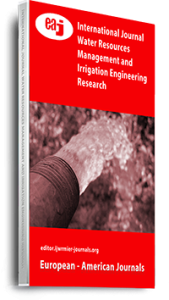Yala River in Kenya has experienced divergent water uses across its network, accompanied by the disproportionate state of lack of water-sharing agreements and non-consolidated planning and management frameworks. The catchment comprises four administrative boundaries namely: Nandi and Kakamega at the upstream, and Vihiga and Siaya at the downstream end. All these make up demand blocks that necessitated optimal water allocation for (i) Domestic-Institutional-Municipal Category, (ii) Agriculture Category and (iii) Industry Category. This study evaluated past trends of water use while simulating future water requirement (year 2016 to 2045) as allocation attribute using Water Evaluation and Planning (WEAP) model for purposes of planning and management. Calibration and validation were performed on two 10-year streamflow datasets, drawn from 4 gauging stations. Simulations were then conducted by WEAP for four scenarios namely: Reference (at 2.8% growth rate), High Growth (3.2%), High Growth (3.5%), and Moderated Growth (2.2%). Results indicated that at Reference Scenario, Domestic-Institutional-Municipal demand category would be allocated 66.9%. Agriculture and Industry categories, on the other hand, require 30.3% and 2.8% of the supply requirements respectively – proportionately spread along the simulated period. Water allocation, however, varied across demand sites (counties) depending on priorities of demand categories, and respective scenarios. WEAP allocated greater water quantities to Siaya County for Irrigation compared to other counties because of the large irrigation requirements, which utilize basin irrigation. Kakamega County was allocated relatively more water for Domestic-Institutional-Municipal use due to its higher population demand levels while Nandi and Vihiga counties were allocated relatively more water for industry use because of their active industrial activities compared to the rest of the counties. Due to the eminent water scarcity that was witnessed from the simulated Yala River water against increasing demand, it is recommended that water use from other sources (groundwater, rainwater and floodwater), should be exploited as supplement to the Yala Catchment flows.
Keywords: Optimal Water Allocation, Sustainable Planning, Water Allocation Model, Yala Catchment

